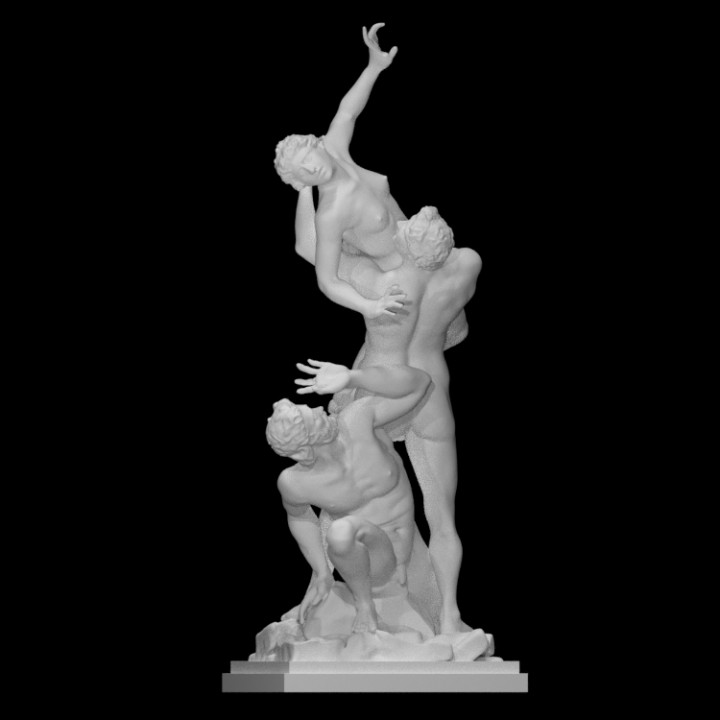
The Abduction of the Sabine Women in Florence, Italy
myminifactory
The Sabine Women's Abduction (Latin: Sabinae raptae) is a legendary episode in the history of Rome, dating back to 750 BC, where Roman men acquired wives from neighboring Sabine families through abduction. The English word "rape" is derived from the Latin "raptio," meaning "abduction" rather than sexual violation, as often misinterpreted today. Historians Livy and Plutarch recount this event in their works, highlighting the bravery and resilience of ancient Romans. This theme has been a staple in art throughout the Renaissance and post-Renaissance periods, allowing artists to depict multiple figures in intense struggle. Comparable themes from Classical Antiquity include the Battle of the Lapiths and Centaurs and Amazonomachy, where Theseus battles the Amazons. The sculpture by Giambologna (1579-1583) depicting three figures - a man lifting a woman into the air while another crouches - showcases the artist's skill in creating complex sculptural groups. Initially intended as a demonstration of the artist's abilities, the subject matter was later changed to fit the theme of the Sabine women's abduction. The sculpture is considered Giambologna's masterpiece, featuring densely packed and intertwined figural compositions that offer multiple viewpoints. When compared to Michelangelo's serene David, this statue exudes dynamic energy, characteristic of Baroque art. However, its verticality lacks the diagonal thrusts achieved by Bernini in his later works, such as the Rape of Proserpina and Apollo and Daphne. The proposed site for the sculpture opposite Benvenuto Cellini's statue of Perseus sparked suggestions to illustrate a related theme, like the rape of Andromeda by Phineus or the respective rapes of Proserpina and Helen. Ultimately, the sculpture was identified as one of the Sabine virgins. The work is signed "OPVS IOANNIS BOLONII FLANDRI MDLXXXII" ("The work of Johannes of Boulogne of Flanders, 1582"). An early bronze model featuring two figures is in the Museo Nazionale di Capodimonte in Naples, while Giambologna's full-scale gesso for the finished sculpture is on display at the Accademia Gallery in Florence. Bronze reductions of the sculpture were produced in Giambologna's studio and imitated by others, becoming a staple in connoisseurs' collections throughout the 19th century.
With this file you will be able to print The Abduction of the Sabine Women in Florence, Italy with your 3D printer. Click on the button and save the file on your computer to work, edit or customize your design. You can also find more 3D designs for printers on The Abduction of the Sabine Women in Florence, Italy.
